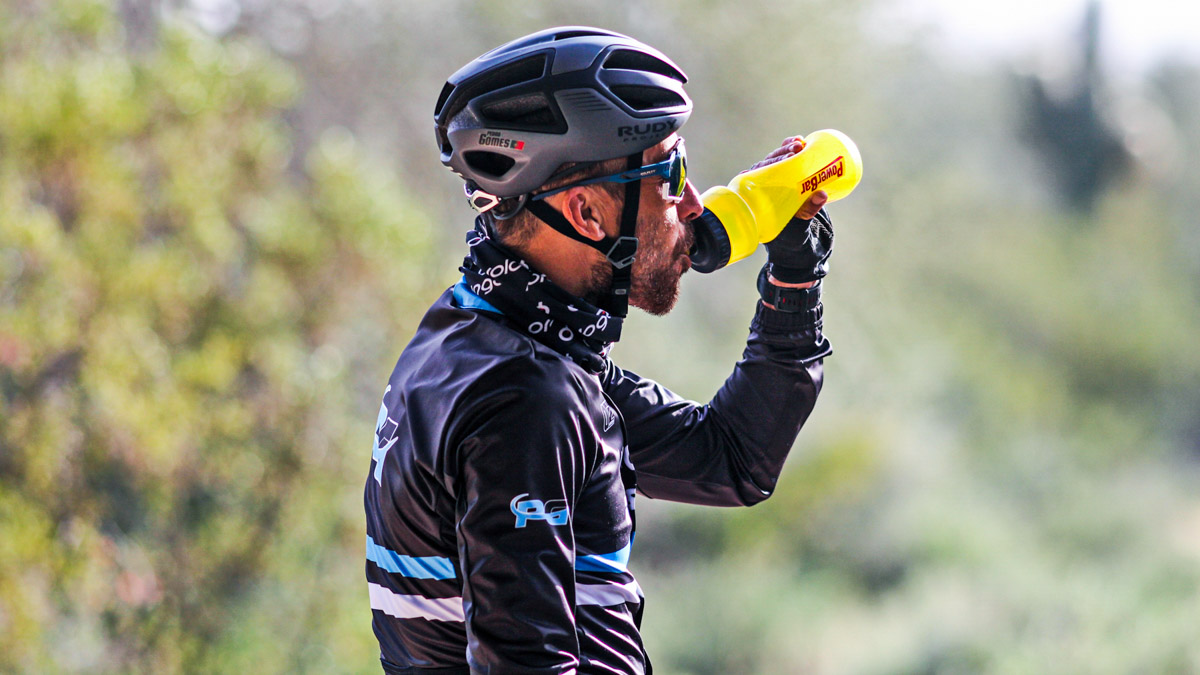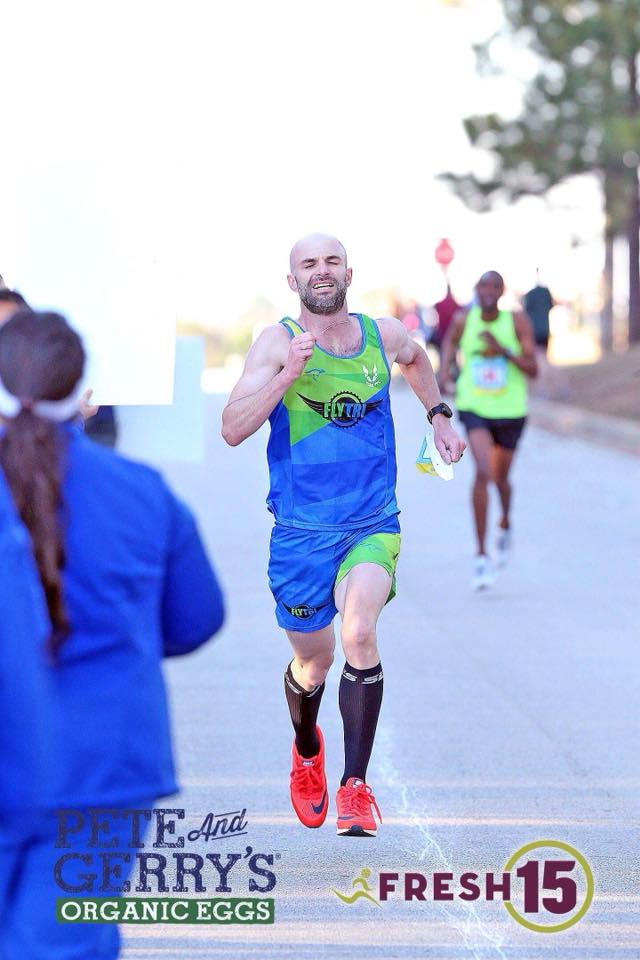Effective Strategies to Beat Summer Heat

Embracing heat training can give you some powerful adaptations. Here’s how to do it right. By. William Ritter
As featured in TrainingPeaks.
AUGUST 27, 2020 · BY WILLIAM RITTER
In many summer Ironman and 70.3 triathlons, you’ll be riding your bike in the late morning and running in the early afternoon, when temperatures are at their highest. Even some cycling races start in the afternoon. While most, if not all, of the summer racing events may be canceled due to COVID-19, heat will still be an important component of most athletes’ summer routines.
Fortunately, training in the heat (and training for heat) can offer you some significant benefits—and they extend beyond the hottest days. Heat training can lead to numerous positive adaptations:
● Increased blood flow to working muscles and to the skin
● Lower heart rate response at similar paces and ambient temperatures
● Decreased use of glycogen stores
● Enhanced sweat capacity and vasomotor responses
● Improvements in sweat capacity
● Decreased sodium loss
● Increased plasma volume
Adaptations to the heat can occur very quickly: about 70% in just five days and about 100% in just two weeks, with just an hour a day of training. These adaptations can last approximately a week.
How much can these adaptations really help you? A study by physiology students at the University of Oregon determined heat-acclimated athletes can perform 4-8% better (in any temperature) than those who are not. That means that if you took two marathoners who normally do a three-hour marathon, heat acclimation could amount to a 14-minute (or more) difference. So how do you train in the heat?
How To Heat Train
The most effective way to train for hot-weather racing is by training in it. This is not a new concept by any means, but it is the most effective. Ideally, the gold standard of training is to try to get in 7-8 sessions of 60-90 minutes each in a two-week period to allow for adequate preparation for and recovery from the heat.
Unfortunately for those who work day jobs, training in the real heat of the day may just not be an option—but can create your own hot environment by turning off the A/C for indoor training, or turning on the heat and/or wearing multiple layers of clothing. As with all things in training, be sure to increase your heat gradually each week.
Professional Triathlete Lionel Sanders wrote an excellent blog about four years ago about his experiences with heat training. To touch on his key points:
CONSISTENCY IS KEY
Like all things, if you just train in the heat a couple of times it likely isn’t going to do any good, but if you build 1-2 days per week for several weeks you will likely see the adaptations of increased plasma volume, lower heart rate, etc. at the given conditions.
KEEP IT SUSTAINABLE
If it’s over the top, you can end up seriously hurt or even in the hospital. Sanders recounts the time he cranked his heater and humidifier as high as they would go and blocked all the cracks on the windows and doors. Then after his session he proceeded to get into the sauna. This was so taxing he ended up dealing with the effects of heatstroke. Sanders now advises that athletes spend 20-30 minutes in the sauna after training. If you don’t have a sauna, you can try a hot tub or the poor man’s version; an attic or a shed-type building in the summer.
RAMP UP SLOWLY
When you are first starting to heat train the first step is to start slowly, gradually just like you would when you’re adding more volume to your run training. In Texas, humidity and temperature start to rapidly increase at a fast pace in March. It can be a good idea to do a couple of sessions each week in the heat at this time as the temperature gradually builds up to oppressive levels by July and August.
EMBRACE THE MENTAL CHALLENGE
When it comes to heat training, don’t underestimate the psychological edge it gives you. Many athletes will ignore this component of training but the power it gives the mind is huge. Andreas Ralert told Sanders that “Kona is 90% mental While the heat makes physiological components much harder to control, with conscious control and deep breathing you can still lower your heart rate. As an example, Sanders recounts the time he was able to reduce his heart rate in the sauna by 10 beats.
Below, we’ll discuss some other ways to get the most out of your workouts as you train towards the benefits above.
Fluid Intake
The best and most effective way to beat the heat is to make sure you are going into your training sessions hydrated. This will help preserve some blood volume, which can help keep your heart rate lower. Your heart rate already tends to increase more in the heat because you’re moving blood to cool your skin—which makes it even more critical to stay on top of your hydration.
If you’re on the bike you will want to practice drinking and reaching for your water bottles, and have a friend pass bottles to you while you’re rolling on the bike.
If you tend to experience gastointestinal distress from fluid intake while training, you may just need to slow down a bit. Coach Andrew Simmons, from Lifelong Endurance suggests taking small sips about every 3 minutes instead of the usual big gulp every 10-20 minutes to avoid putting too much liquid in your system all at once.
Sodium
Sodium gets a bad rap for increasing blood pressure, but it’s extremely critical in regulating the body’s fluid levels. Each athlete secretes a different amount of salt through sweating; one person may lose salt rapidly, say around 1000mg in a 5k run, while another may lose only 200mg.
For short workouts, a simple salty snack post-run can help with rehydration. But during sessions of four hours or more (such as a marathon, ultra run, or long course triathlon) athletes will need to supplement with sodium. Some athletes may need a high concentration sports drink and gels, but others may just need a few salt pills. Practice with a variety of different brands and products to determine what works best for you.
Ice Vests
I first learned this trick when I used to train in Fort Worth with Canadian Pro-Triathlete, Brent Poulsen, who has since retired from triathlon. On the morning of your hot weather race, you can wear an ice vest to lower your core and skin temperature.
If you research this idea you’ll see there is actually strong debate around the value of such a strategy. One study out of the Journal of Strength & Conditioning (March 2014, Volume 28, Issue 3) noted there was no benefit in lowering core temperature but it did lower skin temperature. The journal added that wearing an ice vest can be potentially dangerous, because a cooler skin temperature can fool you into thinking your core is cooler than it actually is, and could result in the existence and continuation of a high and dangerous core temperature.
On the other hand, in a study from 2004, American and Australian marathoners were provided cooling vests to lower body temperature. The vest appeared to keep core temperature down and improved performance in these marathoners. Some marathoners wore the ice vest for 10 minutes and removed it one minute before the start. This study concluded that the marathoners wearing the ice vest before the marathon kept their core temperature cooler for longer than those who did not.
Ice, Cold Water & Sponges
Not too long ago, I would have told you that dumping ice water over your head was a great option for cooling. But there is some emerging evidence that this will cause too much vasoconstriction—when the ice melts your vessels will rapidly dilate, but not enough to allow your blood to cool your skin, which could result in actually feeling hotter.
If you’re going to pour water over your head, it’s best to use room temperature water. You may also want to consider your hands and forearms, which are very vascular. Cooling these areas can have an effect on your whole body.
It’s also worth considering the length of your event. A 2012 study of 10 athletes competing in a 5k time trial concluded that neither drinking water nor pouring it over an athlete’s head improved performance. While the athletes did say doing so gave them the most relief and lowered their heart rate, performance didn’t really improve. While a 5k demands much less than a marathon in terms of hydration and cooling, it looks like cooling strategies really don’t create much of an impact on the shorter races.
Pacing
Ultimately, even if you use all the above methods and strategies successfully, you still have to pace yourself to manage your core temperature. Specifically, you have to avoid going too fast too soon. You have to start off conservatively.
Even with the cooling and hydration strategies and heat adaptation methods, you still have to manage your output and energy expenditure if you want to achieve your best performance for that day when heat is a real issue.
While you train in the summer heat to adapt to warm, hot, or humid conditions, safety is of utmost importance. Pay attention to your heart rate and how you feel and know your limitations. If you are smart with your training and apply these heat training methodologies then you will be fully trained and ready to have a great race.
ABOUT WILLIAM RITTER

Ritter, from Tyler Texas, is the Head Coach at Fly Tri Racing. He is a TrainingPeaks Level 2, Ironman U, USA Cycling, and USA Track and Field Level 2 Endurance Certified Coach and USATF Cross Country Specialist. He specializes in coaching triathletes and runners of all abilities. Ritter’s coaching is detailed and based on the individual athlete blending the art and science of coaching. To learn more about Ritter and personal coaching visit www.flytriracing.com.
Sources
http://www.ncbi.nlm.nih.gov/pubmed/15212747
https://www.ncbi.nlm.nih.gov/pmc/articles/PMC6306444/
http://triathanewbie.com/triathlon_articles/triathlon_article_The_Sweat_Test.html
http://www.ncbi.nlm.nih.gov/pmc/articles/PMC1748408/
http://www.runnersworld.com/nutrition-runners/pass-salt?page=single
www.https://link.springer.com/article/10.1007/s00421-014-3060-1
https://www.lsanderstri.com/blog/2016/01/11/sauna-and-heat-training
https://pubmed.ncbi.nlm.nih.gov/16877041
https://pubmed.ncbi.nlm.nih.gov/22862563/
https://www.trainingpeaks.com/blog/3-ways-heat-acclimatize-live-cold-climate/
The Science of Endurance Hydration. Precision Nutrition. Andy Blow

